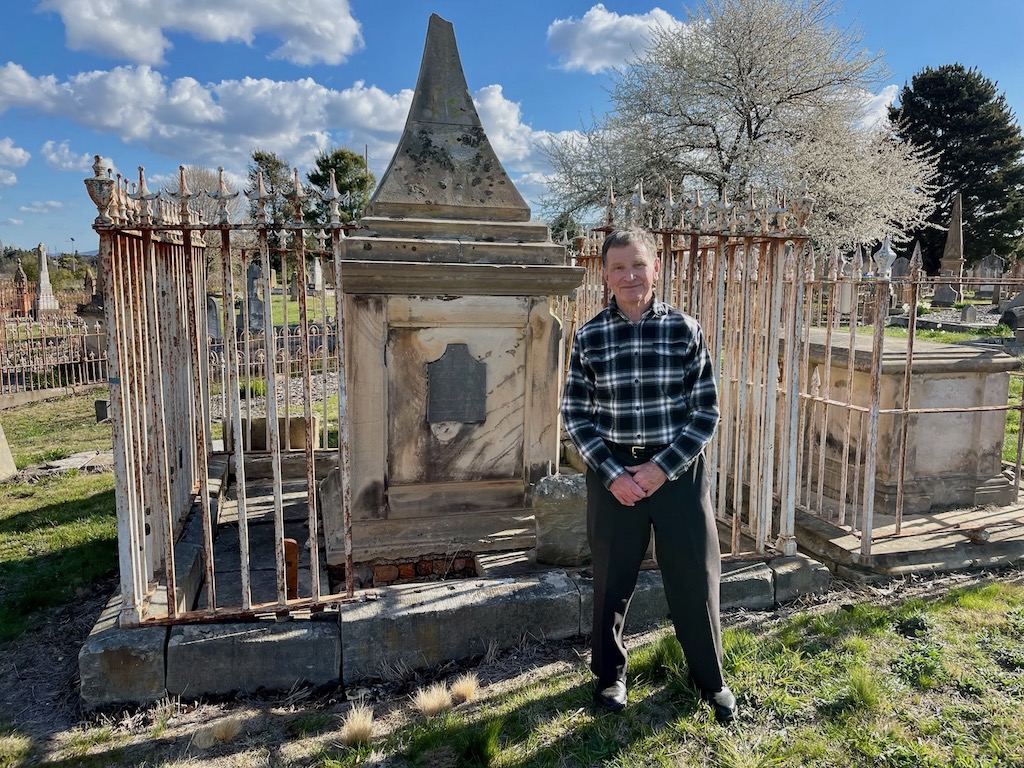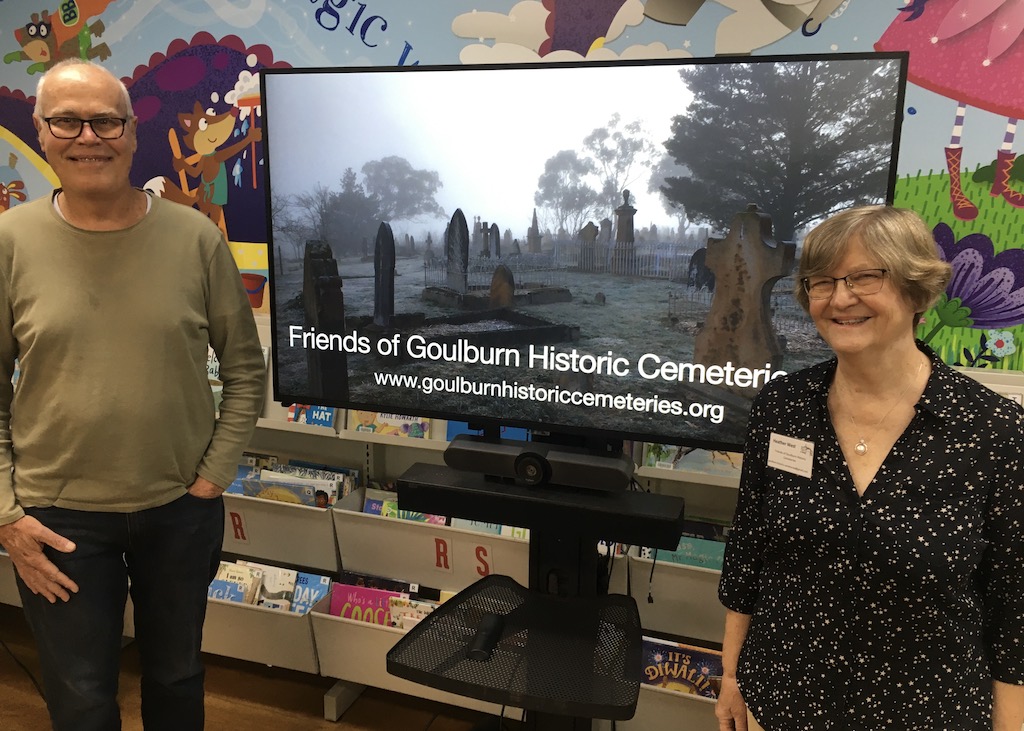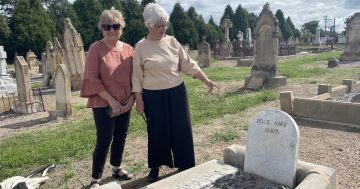
Family history researcher David Weeden from Canberra searched for hours for his great-great-grandfather’s grave at St Saviour’s historic cemetery in Goulburn. The grave’s inscription is almost ineligible, which made his task even harder – until a stranger helped him. Photo: Terry St George.
Two strangers met at St Saviour’s historic cemetery in Goulburn last Tuesday, one leaving with his head shaking at the million-to-one odds of meeting the other.
It was the day before one of the strangers, Terry St George, launched a new website in Goulburn that will save family history researchers much time and effort looking for ancestors’ graves.
Raised in Goulburn and now living in Newcastle, Terry has a deep affection for the city. For the past 20 years, he has run his own software company, which has produced websites for cemeteries in Sydney and Newcastle, among other projects.
His brother Pat, who still lives in Goulburn, accompanied him to the cemetery near Goulburn Jail, one of three historic cemeteries that feature on the website. There, they saw a woman wandering around the graves.
Anne Kingston was visiting the cemetery with her father, David Weeden from Canberra, who has been researching an ancestor, William Shelley. By the time the St George brothers had arrived, Anne and David were despondent at being unable to find the grave and on the brink of abandoning their search.
Anne pointed to the other end of the cemetery. “That’s my Dad down there, and Shelley is his great-great-grandfather,” she said.
Terry saw his chance to test the new website, even though he had never visited the cemetery. Taking out his iPhone, he logged into the new website and typed in Shelley, then refined his search with the man’s Christian names.
“So I clicked on William James Shelley,” he said.
“By this time we were up one end of the cemetery and the lady’s father was down the other end of the cemetery.”
On his iPhone screen, a Google Maps satellite view of St Saviour’s cemetery showed a yellow dot on the site of William Shelley’s grave. He, Pat and Anne walked in that direction, with Terry noting on his screen a red dot indicating his location in relation to the yellow dot up ahead.
“I think we are just about there now,” he said. David was nearby, still searching, when Pat looked around and said, ‘There it is, there’. The red dot was right on the yellow dot and there was the Shelley grave.
Recorded on an impressive headstone was the name William James Shelley, justice of the peace, aged 39, born in 1804 in Tahiti.

Web developer Terry St George and Friends of Goulburn Historic Cemeteries volunteer Heather West at the launch of a website that has locations of graves to help family history researchers. Photo: John Thistleton.
Later, David recalled his astonishment at what had just happened. He and Anne had seen the grave but thought it was too big and imposing to have belonged to his great-great-grandfather. Its inscription is barely legible. They had walked past it probably several times without taking a closer look.
“Honestly, I was so excited when he found that grave for me,” David said. “I have been looking for this for ages. The odds of us meeting him there were a million to one.”
One of Goulburn’s earliest settlers, William Shelley had land on the edge of the Cookbundoon Ranges and another plot, now the site of Goulburn Jail. He was a partner with William Bradley in establishing the Goulburn Brewery. The grave of his wife, Susannah Marsden (Hassall) Shelley, is also in the cemetery.
At Goulburn Mulwaree Library the next day at the launch of the website goulburnhistoriccemeteries.org, Terry recounted the story of the Shelley grave to explain how the website works and its effectiveness.
A retired surveyor and website developer, Terry began building the website after reading about the Friends of Goulburn Historic Cemeteries’ work at the St Saviour’s, Mortis Street and Jewish cemeteries. He began collating information from Heather West, Linda Cooper, Daphne Penalver, Gary Luke (Jewish cemetery) and other cemetery friends, consolidating it all into a database from 4700 records that could create a platform and web file to go onto the web.
He uploaded photos, the names of each grave and research including Trove newspaper clippings. One of the challenges was capturing the latitude and longitude of each grave, especially with St Saviour’s, where the graves do not follow a grid pattern. They’re all over the place.
Nevertheless, the website’s sections and drop-down options enable users to quickly find grave locations and information about people buried there. Typing in a name will bring up a grave’s location indicated by a yellow dot. Clicking on that dot will present more information on the deceased. Options are available to find people killed by misadventure, noteworthy people, prominent people, railway workers and people killed in World War I. The names of people in unmarked graves are also listed.
The fingertip ease of locating people long gone is thanks to years of work by the volunteer cemetery friends and a web developer who has rewarded their civic-mindedness with his own.










